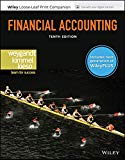
Concept explainers
(a)
Accounts receivable refers to the amounts to be received within a short period, from the customers, upon the sale of goods, and services on account. In other words, accounts receivable are amounts customers owe to the business. Accounts receivable is an asset of a business.
Bad debt expense:
Bad debt expense is an expense account. The amounts of loss incurred, from extending credit to the customers are recorded as bad debt expense. In other words, the estimated uncollectible accounts receivable are known as bad debt expense.
Allowance method:
It is a method for accounting bad debt expense, where uncollectible accounts receivables are estimated, and recorded at the end of particular period. Under this method,
To Prepare: The
(b)
To prepare: The current asset section of Company F’s
(c)
Accounts receivable turnover:
Accounts receivable turnover is a liquidity measure of accounts receivable in times, which is calculated by dividing the net credit sales by the average amount of net accounts receivables. In other words, it indicates the number of times the average amount of net accounts receivables collected during a particular period.
Average collection period:
Average collection period indicates the number of days taken by a business, to collect its outstanding amount of accounts receivable on an average.
To calculate: The accounts receivable turnover and average collection period of Company F.
Want to see the full answer?
Check out a sample textbook solution
Chapter 8 Solutions
Financial Accounting, 10e WileyPLUS (next generation) + Loose-leaf
- Hello tutor please given Fainancial accounting question answer do fast and properly explain all answerarrow_forwardKindly help me with this General accounting questions not use chart gpt please fast given solutionarrow_forwardPlease explain the solution to this general accounting problem with accurate principles.arrow_forward
- how do you calulate your personal financial statement? how do you calulate you personal income statement?arrow_forward1. Based on information contained in the cases and an analysis of the balance sheet and income statement for The Bargain Cart, suggest three potential bases and percentage ranges for each base that you believe should be considered to use in establishing planning materiality for The Bargain Cart. Provide rationale for why financial statement users might emphasize the suggested bases and why higher or lower percentages for each range might be selected.arrow_forwardSubject ? Financial accounting questionarrow_forward

 AccountingAccountingISBN:9781337272094Author:WARREN, Carl S., Reeve, James M., Duchac, Jonathan E.Publisher:Cengage Learning,
AccountingAccountingISBN:9781337272094Author:WARREN, Carl S., Reeve, James M., Duchac, Jonathan E.Publisher:Cengage Learning, Accounting Information SystemsAccountingISBN:9781337619202Author:Hall, James A.Publisher:Cengage Learning,
Accounting Information SystemsAccountingISBN:9781337619202Author:Hall, James A.Publisher:Cengage Learning, Horngren's Cost Accounting: A Managerial Emphasis...AccountingISBN:9780134475585Author:Srikant M. Datar, Madhav V. RajanPublisher:PEARSON
Horngren's Cost Accounting: A Managerial Emphasis...AccountingISBN:9780134475585Author:Srikant M. Datar, Madhav V. RajanPublisher:PEARSON Intermediate AccountingAccountingISBN:9781259722660Author:J. David Spiceland, Mark W. Nelson, Wayne M ThomasPublisher:McGraw-Hill Education
Intermediate AccountingAccountingISBN:9781259722660Author:J. David Spiceland, Mark W. Nelson, Wayne M ThomasPublisher:McGraw-Hill Education Financial and Managerial AccountingAccountingISBN:9781259726705Author:John J Wild, Ken W. Shaw, Barbara Chiappetta Fundamental Accounting PrinciplesPublisher:McGraw-Hill Education
Financial and Managerial AccountingAccountingISBN:9781259726705Author:John J Wild, Ken W. Shaw, Barbara Chiappetta Fundamental Accounting PrinciplesPublisher:McGraw-Hill Education





